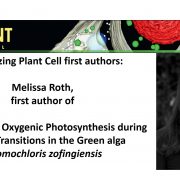
Recognizing Plant Cell first authors: Melissa Roth
Melissa Roth, first author of Regulation of Oxygenic Photosynthesis during Trophic Transitions in the Green Alga Chromochloris zofingiensis
Current Position: Assistant Researcher, Plant and Microbial Biology, UC Berkeley
Education: PhD, Marine Biology, Scripps Institution of Oceanography, UC San…

How Cotton Protects its Chitinase from a Fungal Protease
Han et al. demonstrate that a cotton secretory protein CRR1 protects cotton Chitinase 28 from cleavage by a pathogen serine protease, VdSSEP1. Plant Cell https://doi.org/10.1105/tpc.18.00390. By Li-Bo Han, Jun Liu and Gui-Xian Xia
Background: The apoplast is an extracellular space in plant tissues.…
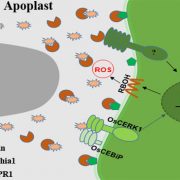
The Battlefield in the Rice Apoplast
Yang et al. show how rice recognizes a Magnaporthe oryzae chitinase to trigger immune responses to this fungal pathogen. Plant Cell https://doi.org/10.1105/tpc.18.00382
By Chao Yang and Jun Liu
Background: Plants, like us, have an immune system that protects them from the majority of pathogen…
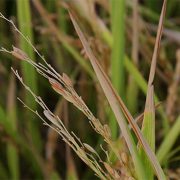
Seed Shattering in Rice
Jiang et al. identified a genetic factor regulating seed shattering in rice. The Plant Cell (2019). https://doi.org/10.1105/tpc.18.00304
By Liyun Jiang and Lubin Tan
Background: ‘Seed shatter’ refers to the release of mature seeds from their mother plants, which allows offspring dispersal in…

Ubiquinone (Coenzyme Q) Biosynthesis in Plants: Free that Ring
Soubeyrand et al. use genetic and biochemical evidence to show that Arabidopsis and tomato can derive the ubiquinone precursor 4-hydroxybenzoate from the B-ring of kaempferol. Plant Cell https://doi.org/10.1105/tpc.18.00688.
By Eric Soubeyrand, Timothy S. Johnson, and Scott Latimer, University…

Enzymatic Sweeteners as Tools for Biotech Applications
Louveau et al. investigate plant natural products in the large family of enzymes called arabinosyltransferases https://doi.org/10.1105/tpc.18.00641
Background: Plants produce a diverse array of natural products. These compounds have important ecological functions, providing protection against pests,…
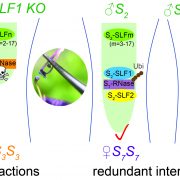
Petunia Battlefield in Style: S-RNases vs. SLF proteins
Sun et al. use CRISPR/Cas9 in Petunia to establish the essential role of SLF proteins in self-compatibility and reveal their complex interactions with S-RNases. Plant Cell https://doi.org/10.1105/tpc.18.00615.
By Linhan Sun and Teh-hui Kao, The Pennsylvania State University
Background: Plant…
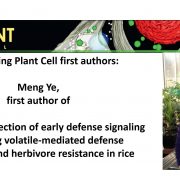
Recognizing Plant Cell first authors: Meng Ye
Meng Ye, first author of Molecular dissection of early defense signaling underlying volatile-mediated defense regulation and herbivore resistance in rice
Current Position: Associate Professor in Tea Research Institute, Chinese Academy of Agricultural Sciences
Education: PhD in Entomology (2016),…

Tomato Hairs and Metabolites - A Dual Narrative
Xu et al. find that the transcription factor SlMYC1 is involved in trichome formation and regulates mono- and sesquiterpene biosynthesis differentially in leaf and stem trichomes in tomato.
By Robert Schuurink, Department of Plant Physiology, University of Amsterdam, NL
Background: Many plants…

